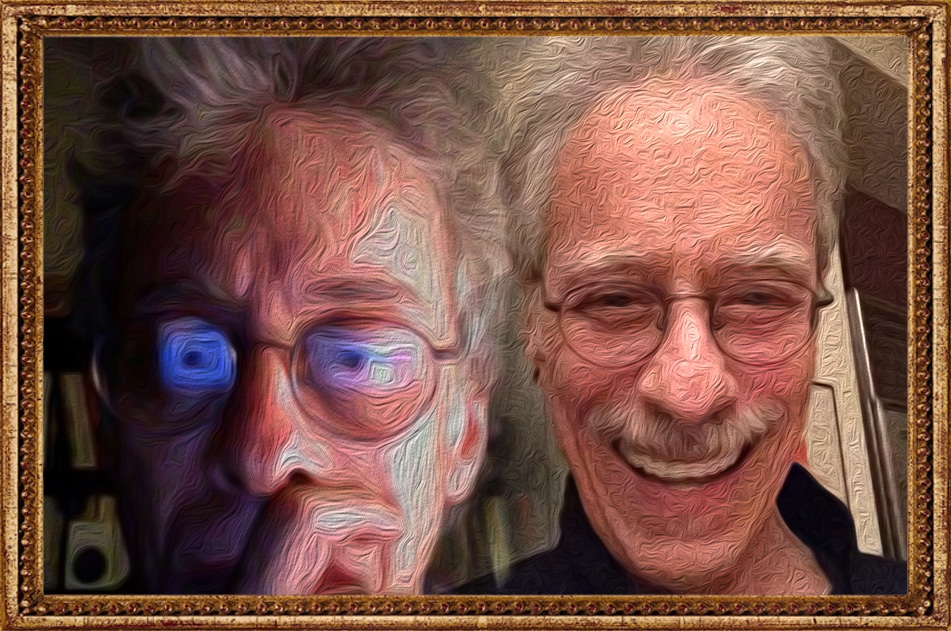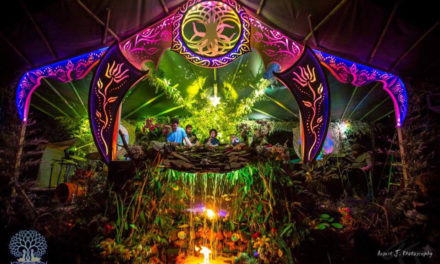You don’t have to be a wide-eyed millennial to have a mind-opening and life-changing experience with psychedelics. As the media coverage and scientific validity of psychedelics continues to expand, a growing number of middle aged and senior adults are taking note, and some of them are taking the leap of faith into experiencing it for themselves. While it can be a taboo and intimidating prospect, many people report that when done with proper care and mindfulness, these kinds of experiences can be among the most illuminating and inspiring moments in their lives.
Neal Marshall Goldsmith is an author, public speaker, and clinical psychotherapist who is among the tribe of people who rediscovered psychedelics in middle age. For Neal, his experiences lead to a significant evolution of his clinical practice, major changes in perspective, and a new passion for sharing the potentials of psychedelics though his book Psychedelic Healing and the Horizons: Perspectives on Psychedelics conference in New York that he helps to produce each year. In our conversation with Neal, he discusses how curious middle aged seekers might approach psychedelics for the first time, and what he sees in a near future where psychedelic therapy is both legal and widespread.
Thanks so much for speaking with us, Neal. Let’s talk about your reintroduction to psychedelics at age 40. This is a topic that is not discussed all that much- people in midlife rediscovering psychedelics, or discovering them for the first time. What would you say to someone in their 40’s or 50’s who has been impressed by psychedelic research findings and is interested but a little scared to take that leap?
First of all, I would send them some information so they can educate themselves further- not just about the substances, but also about the process of preparation and integration and the larger social context in which psychedelics have existed throughout history. Maybe their fear will change somewhat, or their intentionality or expectations will evolve too. That information can be very illuminating.
Nancy Reagan famously said “Just say no”, but really, it’s about ‘Just say know.’ You have to do your homework. I refer people to Erowid, to MAPS, and to other resources to help them get familiar. Because in this culture, while psychedelics are re-emerging in many ways, we still don’t have a really clear sense of their role or place in our society. Instead, there is a lot of misinformation and fear-based stuff. People have to immerse themselves in the subject to better understand what they are facing.
People approach me for psychedelic therapy often, which is sad, because I can’t legally do that of course. They read about how it can help depression, and they say “I’ve been depressed my whole life, I’m at my wits end, I’ve tried dozens of pharmaceuticals with no results, and it sounds like psychedelics can help!” Maybe they can or maybe they can’t… and of course, it’s not the psychedelics themselves that cause the changes; they just act as a catalyst.
People also need to understand that psychedelics themselves can easily cause more harm than good when used inappropriately. Psychedelics alone without psychotherapy or a spiritual context can potentially be dangerous, because you open yourself up, and if it gets scary and you’re not prepared for that deeper work, then your experience gets soured on them, and that’s a real shame. This is one of the consequences of psychedelics not being integrated well into our society yet.
People often do psychedelics in a recreational context. There’s nothing wrong with recreational use when it’s done safely, but still, it’s not the ultimate use of these substances. I like to bring up the four levels of the psychedelic experience as outlined by Masters and Houston. Level 1 is a sensory experience, likened to a curtain of pretty glass beads that bestows childlike wonderment. Level 2 is psycho-dynamic-historical, dealing with parents and lineage. Level 3 is about the larger gestalt: Gaian consciousness and nature mysticism. Then level 4 is white light, ego death, samadhi, where the “I” disappears. That 4th level is correlated with outcome in the research studies, especially with psilocybin. People who get there tend to lose their fear of death and transcend their addictions to substances that they’ve relied on. But it bears mentioning that in the MDMA for PTSD studies, the 4th level experience is not really required. MDMA works more gently by opening up your heart, and it’s more about relaxing the psycho-bodily armature and recontextualizing traumas than having a full-blown mystical experience.
Speaking of MDMA and PTSD, your book Psychedelic Healing discussed psychedelic-assisted psychotherapy back in 2010, and today we are seeing highly successful applications of this in FDA-approved clinical trials. Do you have any comments on the current model of psychedelic research? Are they getting it right, or are they missing anything?
They are definitely getting it right enough. As to whether psychedelic therapy will be structured this way in the future when the dust settles, who knows. It’s a good model that is informed by previous research and tribal societies.
The basic format is that the therapists meet you upfront and have a handful of sessions to develop rapport and a working therapeutic alliance, and then you have the MDMA-assisted sessions. Afterwards, they have another handful of sessions and are on call to help people integrate. That’s the model. It incorporates a lot of good stuff such as preparation, and male-female therapist teams.
That method is great for research, but not probably how it will play itself out ultimately. I say ultimately because the research is going very well, with success in phase 1 and 2 and now going into 3, which will eventually lead to FDA approval. The data has been great. In 5-7 years, both psilocybin and MDMA will probably become rescheduled and able to be prescribed off-label. It’s not a guarantee, but that’s what people are guesstimating.
Once these substances are prescribable, male-female teams will likely be unwieldy, expensive, and difficult to arrange, so that’s not likely to stick in all applications in the future. Most importantly, 3 pre sessions and 3 post sessions is not going to be ideal, that I can say with great certainty. The reason why is because once these things come out of the research into actual practice, therapists will be able to work with people for months or years around these therapies. You’ll have a chance to lay a foundation and develop a relationship, to discuss if psychedelic-assisted therapy could be useful for you, and then the experience happens on that foundation which could be years in the making. Then after the experience, the psychotherapeutic relationship could continue far into the future, not just 3 sessions.
We don’t want to rock the boat at all at this point, and I’m fully behind the current protocols. The current model is great, the results are very strong, but down the road the methodology will change and adapt to it being available on a larger scale. People talk about the psychedelic renaissance that began in the 90’s and is flowering now, but the real psychedelic renaissance will happen after rescheduling.
We are very grateful to Neal for taking the time to speak with us. Be sure to check out his book Psychedelic Healing: The Promise of Entheogens for Psychotherapy and Spiritual Development and the upcoming conference in New York Horizons: Perspectives on Psychedelics.












I’d also talk to that 40 or 50 year old about developmental stages and the use of visionary plants in tribal rites of passage… ;))
Geezer Guides !!!!!!